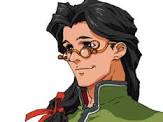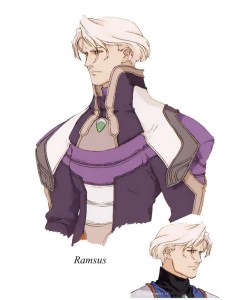Citan Uzuki

The idea of humanity being secretly ruled by an invisible, almost-omnipresent empire sounds ridiculous. Certainly the playable characters of the Xenogears videogame must have thought so. But it’s not a joke. The Solarian Empire exists. Their influence stretches across a global theater. They have fingers in the pies of nearly every government on the face of the planet. And the governments they don’t control, there’s a Solarian plan to make sure they will.
This idea sounds even more laughable the second time around. But in a sea of uncertainty, Citan Uzuki is an island of balance. When the party reacts to the lengths Solaris will go to for the sake of their master plan, it’s Citan who provides the raw truth. Solaris exists. The rumors are all true. Humanity is nothing to them. Little more than domesticated animals. Citan knows this. Because he’s been there. But more on that in a bit.
Citan’s essentially the shadow of main protagonist Fei Fong Wong. Where Fei goes, Citan is already at his side, ready to lend a helping hand or emotional support in the face of naked cruelty. He’s not only Fei’s mentor, but perhaps his best friend.
Unfortunately, Citan’s true agenda is far more complex than anyone realizes.
Given Solaris’ reach, it’s not unsurprising for the older generation of characters to have spent time in Solaris. But while others broke ties and descended to the surface, Citan is in the direct employ of Emperor Cain, Solaris’ ancient ruler. His task: keeping tabs on Fei.
Fei’s more than a simple painter. He is the reincarnation of the Contact (he who inherits God’s strength). Cain and the Gazel Ministry – the computerized, disembodied spirits of the planet’s first humans – have much to fear from Fei’s power. Though under orders to eliminate Fei if the worst happened, Citan’s supervision allows Fei to mature beyond the need for simple slaughter. Citan has a large influence on who Fei is and what he becomes.
Outside of this, Citan lends a great deal of insight to his comrades. His detailed knowledge of the Solarian society allows him to create both short-term and long-term strategies. Helping Crown Prince Bart Fatima regain the Aveh throne is important, not only for the people but to ensure a unified front to better assault Solaris. Nor does Citan twiddle his thumbs on the sidelines. He’s out there with the others, fighting Solarian cruelty face-to-face. There is no better ally to have.
An omnipresent empire ruling over humanity in secret? An empire whose influence can be found in governments around the globe? All while being invisible to the naked eye? Preposterous. Except it’s all true. Solaris exists. You want to free the people? Start listening to Citan Uzuki. With his council, victory is more than the light at the end of the tunnel. With him on your side, freedom just might have a chance.









